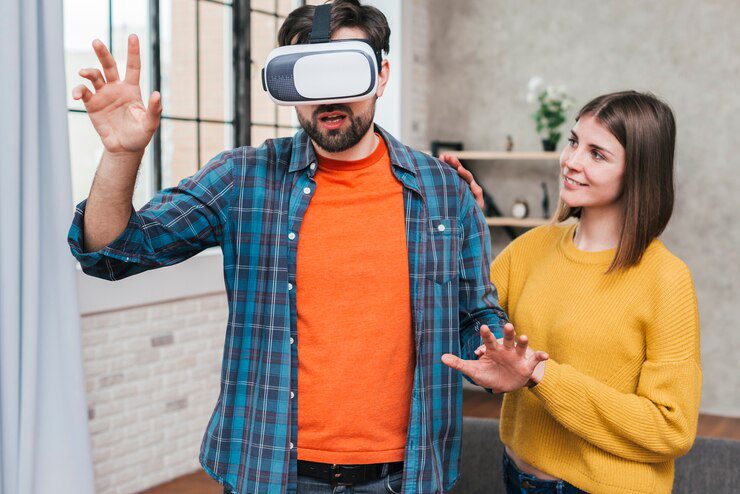Remember the days of clunky VR headsets and grainy AR phone filters? Those days are rapidly fading in the rearview mirror. Get ready for the next evolutionary leap – Mixed Reality (MR), where the physical and digital worlds collide in a symphony of cutting-edge tech. VR and AR are no longer competitors; they’re joining forces to create immersive experiences that will leave you saying “.”
From Separate Realities to a Blended Universe: Understanding VR and AR
Before we dive into the mind-blowing world of MR, let’s revisit the OG immersive technologies:
Virtual Reality (VR): VR transports you entirely into a computer-generated world. Think strapping on a headset and exploring the surface of Mars or battling aliens in a futuristic cityscape.
Augmented Reality (AR): AR overlays digital elements onto the real world. Imagine holding your phone up and seeing 3D furniture appear in your living room to see how it would look before you buy it.
VR and AR: Why They’re a Match Made in Tech Heaven
While both VR and AR offer unique experiences, their limitations become apparent when compared to MR. VR can feel isolating, and AR can leave you tethered to a phone screen. This is where MR steps in, like the ultimate wingman, combining the strengths of both to create a truly immersive experience.
Mixed Reality: The Best of Both Worlds
MR seamlessly blends the physical and digital worlds. Imagine a surgeon wearing an MR headset that overlays vital patient information directly onto their field of vision during an operation. Or, picture a furniture designer manipulating a 3D model of a chair in their actual workspace, seeing how light and shadow interact with the design in real time. These are just a taste of the possibilities that mixed reality experiences unlock.
The Future of MR: Out-of-This-World Applications
The potential applications of MR are vast and constantly evolving. Here’s a glimpse into what the future holds:
Revolutionizing Education: Imagine learning about history by walking through virtual recreations of ancient civilizations, or dissecting a virtual frog in biology class.
Enhanced Training: MR can create realistic training simulations for pilots, surgeons, and even firefighters, allowing them to practice in a safe, controlled environment.
Supercharged Shopping: Try on clothes virtually without leaving your living room, or see how a new paint color would look on your walls before you buy it. MR is poised to transform the retail industry.
The Future of Work: Imagine collaborating with colleagues from around the world in a virtual workspace, complete with 3D models and real-time communication. MR could redefine how we work.
Challenges and Considerations: The Road to Widespread MR Adoption
While the future of MR-VR and AR convergence, is bright, there are still challenges to overcome:
Tech Hurdles: Current MR technology requires powerful hardware that can be bulky and expensive. Making MR experiences more accessible will require advancements in tech.
Privacy Concerns: The integration of the physical and digital worlds raises privacy concerns. Clear regulations and ethical considerations are crucial for responsible MR development.
The Human Factor: How will extended use of MR headsets impact our social interactions and mental well-being? Finding a balance between the real and virtual worlds will be key.
Conclusion
The convergence of VR and AR into MR is more than just a technological advancement; it’s a paradigm shift. As VR headsets become lighter and more affordable, and AR technology continues to evolve, we can expect MR to become the dominant immersive technology. So, buckle up, fellow tech enthusiasts, because the future is mixed, and it’s going to be wild!







